Mercury is the speediest planet in the solar system, orbiting the Sun at an average of 107, 030 mph, which is almost twice as fast as the Earth, The speed coupled with the fact that Mercury is much closer to the Sun than the Earth is, means that a year on Mercury [ the time it takes for Mercury to circle the Sun] lasts just 87.99 days, or roughly three months
Satellite With The Thickest Atmosphere
Saturn's large moon Titan has the thickest
atmosphere of any moon in the Solar System, exerting a surface pressure of
1.44 bar. It consists mainly of nitrogen gas and is the most similar
atmosphere to our own in the Solar System. Titan is the only moon in the
Solar System to have a thick atmosphere - an orange smog layer completely
obscures our view of its surface. In 2004, a European probe called Huygens
will parachute through Titan's atmosphere and send back the very first
pictures of the surface.
Longest Total Solar Eclipse
The longest total solar eclipse of recent date was on June 20, 1995 [7min, 8 sec], visible west of the Philippines, although it was clouded out along most of its track. The maximum possible duration of an eclipse of the Sun is 7 min 31 sec. An eclipse of 7min 29 sec should occur in the mid Atlantic Ocean on July 16, 2186
Greatest Meteor Shower
The greatest meteor shower on record occurred
on the night of November 16-17, 1966, when the Leonid meteors (which recur
every 33.25 years) were visible between western North America and eastern
Russia (then USSR).
Planet With The Greatest Ring System
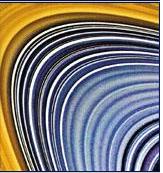
Saturn is the sixth planet from the Sun and the
second-largest planet in the Solar System, after Jupiter. Through good
binoculars or a small telescope, Saturn appears noticeably different from
all the other planets because its rings are visible. It has no solid surface
and below the beige cloud tops, the atmosphere just keeps going down,
becoming thicker and thicker until it becomes a liquid, and then a liquid
metal. Around 50,000 km (30,000 miles) below the clouds is a small rocky
core, around the size of Earth.

Venus has the hottest surface of any planet in
the Solar System. Its sizzling heat soars up to 480°C (896°F), hot enough to
melt lead. The heat is caused by the greenhouse effect where sunlight warms
the planet's surface, with the resulting heat unable to escape because of
the dense atmosphere of carbon dioxide. Scientists have battled for years to
send probes onto this scorching planet, but the research environment has
almost always proved too hot to handle! This sizzling sphere evaded
scientific exploration until the invention of the rocket. Later developments
in radar telescopes made it possible to see through the planet's dense cloud
cover.
Largest Recorded Impact In The
Solar System
Between 16 and 22 July 1994, more than 20
fragments of comet Shoemaker-Levy 9 collided with the giant planet Jupiter.
The greatest impact was of the "G" fragment, which exploded with the energy
of roughly 600 times the arsenal of the world, equivalent to six million
megatons of TNT. The impacts of comets and asteroids on planets have been a
fundamental process in the formation of the planets and the Solar System as
we see it today. The planets grew from sweeping up smaller comets and
asteroids and adding the mass to their own. When Carolyn and Gene Shoemaker,
along with David Levy, discovered this comet, they had no idea it would
become one of the most famous in history.
Largest Planet
Jupiter is the largest planet in the Solar
System. With an equatorial diameter of 143,884 km, (89,405 miles), it is as
wide as more than 11 Earths stacked side by side. The planet also has the
shortest period of rotation - Jupiter days last just under ten hours.
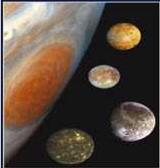
Smallest Planet

Pluto has a diameter of 2,320 km (1,442 miles)
and a mass 0.0022 times that of the Earth. Its surface temperature is
believed to be about –233 deg C (–387 deg F). That's the lowest temperature
on a natural body in the Solar System. The discovery of Pluto by Clyde
William Tombaugh at the Lowell Observatory, Flagstaff, Arizona, USA was
announced on March 13, 1930.

Earth is the densest planet, with an average
density of 5.517 times that of water. Formed around 4.6 billion years ago,
Earth is divided up into a solid iron core of iron and nickel and an outer
core of liquid iron and nickel. Seventy-one per cent of its surface is
covered with liquid water, a property unique in the Solar System.
Longest Measured Comet Tail
The longest comet tail ever measured was over 350 million miles long and belonged to the comet Hyakutake. This is more than three times the distance from the Earth to the Sun. The tail was discovered by Geriant Jones of Imperial College , London, UK on Sept. 13, 1999 using data gathered by the ESA/NASA spacecraft Ulysses on a chance encounter with the comet on May 1, 1996.
Faintest Planet In The Solar System
The faintest of the nine planets as seen from
Earth is Pluto which has a magnitude of 15.0, and can only be viewed through
a telescope. The discovery of Pluto by Clyde William Tombaugh, USA at the
Lowell Observatory, Arizona, was announced on March 13, 1930. The planet has
a diameter of 2,324 km (1,444 miles), and a mass of 0.0022 of the Earth's
own mass.
Innermost Planet

Mercury, which orbits the Sun at a mean
distance of 57,909,083 km (35,983,036 miles), has an orbital period of
87.9684 days
Planet With The Shortest Day
The planet Jupiter has the shortest day of all
the nine major planets in the Solar System. It spins around on its axis once
every 9 hrs 55 mins and 29.69 secs. Jupiter is about five times further from
the sun than the Earth, and so it's years are much longer than Earth years.
Jupiter completes one "year" in 4,332.6 Earth days. Jupiter is one of the
brightest objects in the night sky.
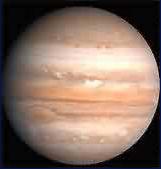
The brightest asteroid is Vesta, which was discovered on March 29, 1807. Vesta is the only asteroid that is visible to the naked eye from Earth on a clear night. This is due to the brightness of its surface, its size - which measures 358 miles across - and the fact that it can come as close to Earth as 105 million miles.
Largest Planetary Satellite
Ganymede is the largest satellite in the Solar
System. One of the large moons of Jupiter, with a diameter of 5,268 km
(3,273 miles), Ganymede is actually larger than the planet Mercury.
Highest Cliffs In The Solar System
NASA's Voyager 2 probe encountered the planet
Uranus and its collection of moons in 1986. The small moon Miranda, with a
diameter of 472 km, has a surface made up of a jumble of bizarre geological
features. One of the most prominent of these features is an enormous cliff
with a vertical relief of about 20 km (12 miles). This cliff, named
Verona Rupes, is 10 times higher than the walls of the Grand Canyon on
Earth. That this towering cliff is so huge is made even more remarkable by
the small size of Miranda itself. The white material exposed in the cliff
face is probably mostly water ice.
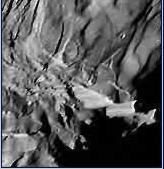
Most Volcanic Body
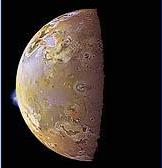
Italian astronomer, Galileo Galilei discovered
Io in 1610. It is the innermost of the four large moons orbiting Jupiter,
which are also known as the Galilean satellites. Through a small telescope,
or even binoculars, they can be seen as four tiny star-like objects, which
change position around Jupiter from night to night. The surface of Io is
completely dominated by volcanism, yet the average surface temperature is
around a bitterly cold 143 degrees below zero. It has a very thin atmosphere
that is made up of the gases erupting from the volcanoes.